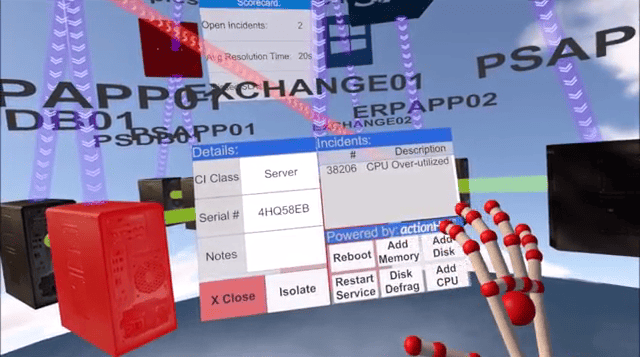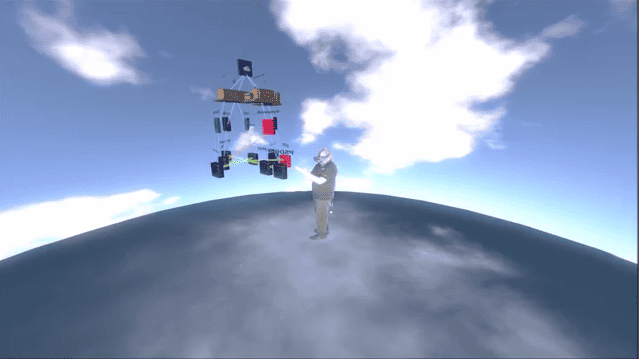Virtual Reality CMDB: The Future of Service Management
By Collin Parker, Software Architect, Cloudaction
Virtual reality (VR) is one of the most promising technologies for the ongoing evolution of service management. Here at Cloudaction, we’re looking out five to 10 years to imagine how VR can be a game changer for Remedyforce users.
The area where VR could have the most immediate impact is CMDB. Current CMDB solutions use two-dimensional forms that tend to fall short in representing complex relationship and dependency data, which makes any kind of meaningful analysis painful. While there are Configuration Item (CI) viewers in the market, they lack extra “3D” dimensionality of true VR. And because viewing more than one type of relationship creates so much clutter that it’s difficult to find what you’re looking for, most CI viewers are not adequate for impact analysis on a change you are looking to perform.
That’s why we believe CMDB is where the promise of VR in service management comes into focus. To that end, we’ve built a prototype VRCMDB for Remedyforce in order to see what the future holds for VR and service management. And believe me, it’s exciting.
Our VRCMDB incorporates the Remedyforce CMDB and leverages Cloudaction’s actionHub™ integration engine to connect Remedyforce Service Desk with Microsoft System Center Orchestrator. We had two essential design requirements for the VRCMDB. First, it had represent CI and Relationship data fully in 3D. Second, it had to allow the user to interact with the data and perform corrective actions in Remedyforce.
The VRCMDB prototype enables the Remedyforce admin, using a head-mounted display and positional tracking, to gain a more holistic perspective via several key capabilities:
- 3D Data Representation – A familiar hierarchical graph pairs CMDB data and intuitively displays different types of relationships between CIs using symbols and color links.
- Rich Data Integration – Integration with Remedyforce Incident Management fires off alerts in the VRCMDB. Using actionHub, UI buttons associated with each CI transmit remote commands to System Center Orchestrator and initiate tasks to resolve and then close the Incident.
These capabilities hold tremendous benefits for Remedyforce users. For example, during the Remedyforce Change Management process, the VRCMDB gives additional insight during impact and risk analysis, so users can solve more issues before they arise in production, giving customers a more reliable infrastructure that is resilient to changes. Similarly for Remedyforce Incident Management, VRCMDB gives users real-time issue notifications and SLA data so they have a complete view of what is happening in their environment.
The VRCMDB provides an eye-opening glimpse of a promising future for Remedyforce and service management. And if you’re going to Dreamforce 2016 next month, drop by our actionHub booth (#342) and experience the VRCMDB yourself.


